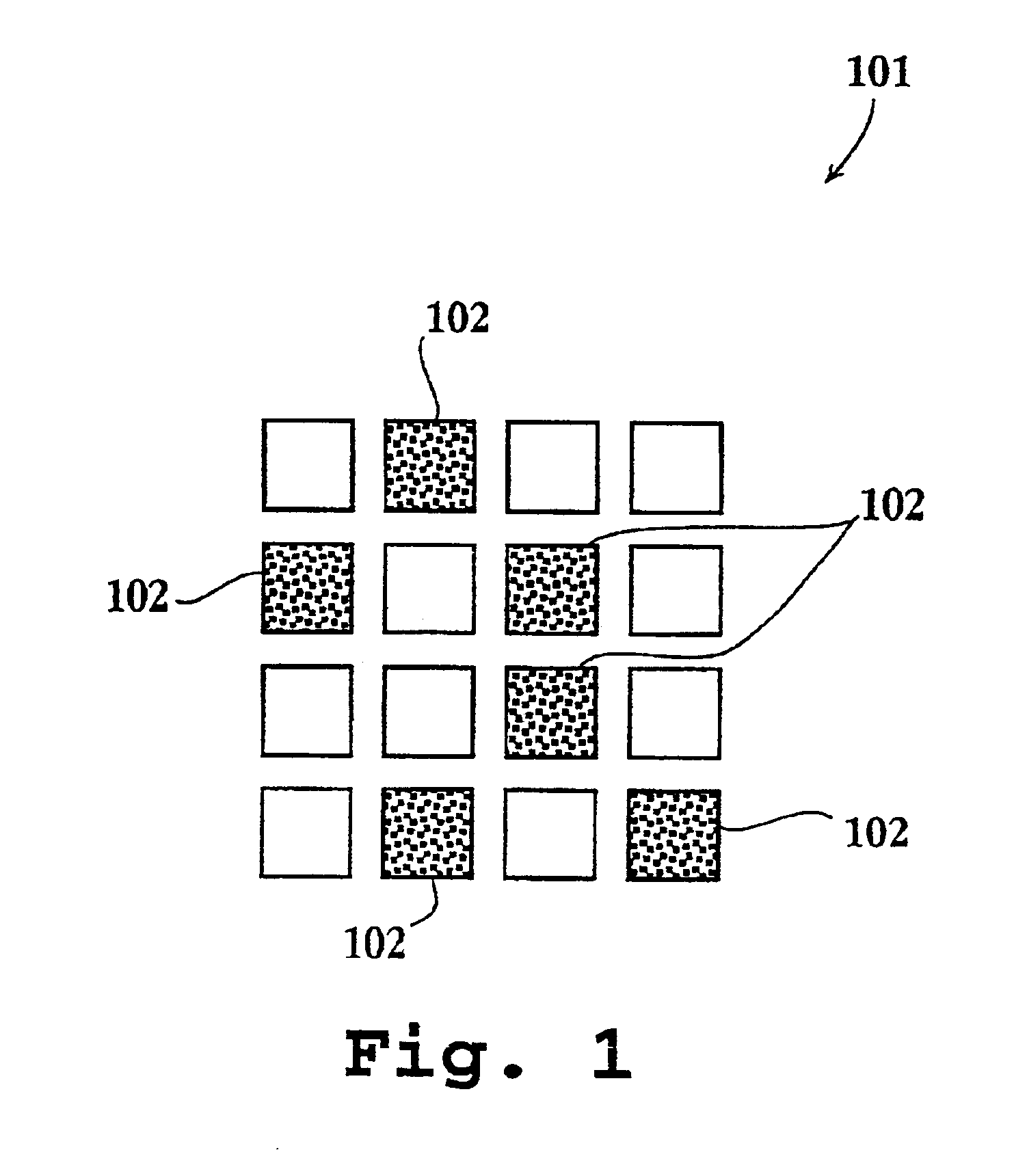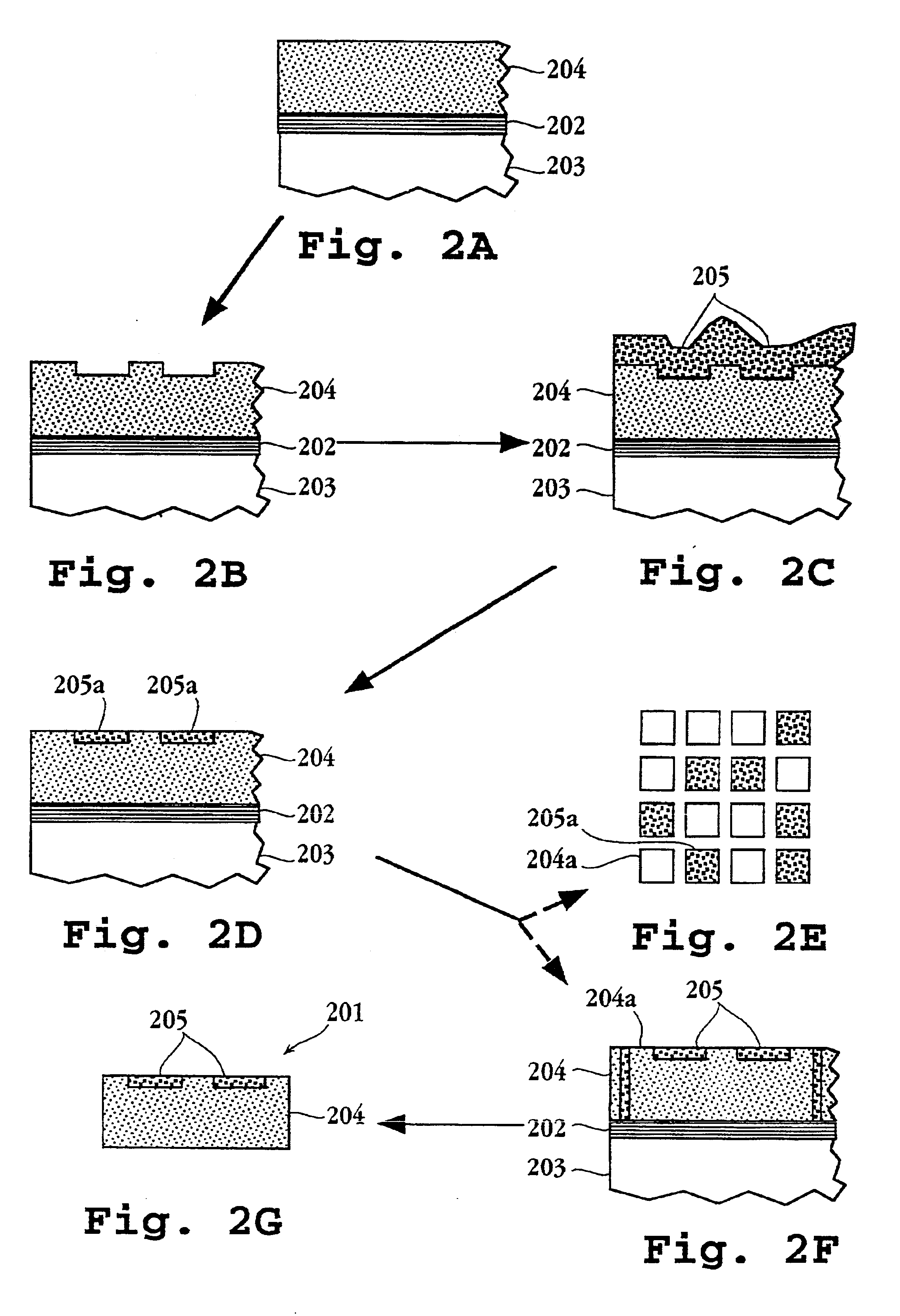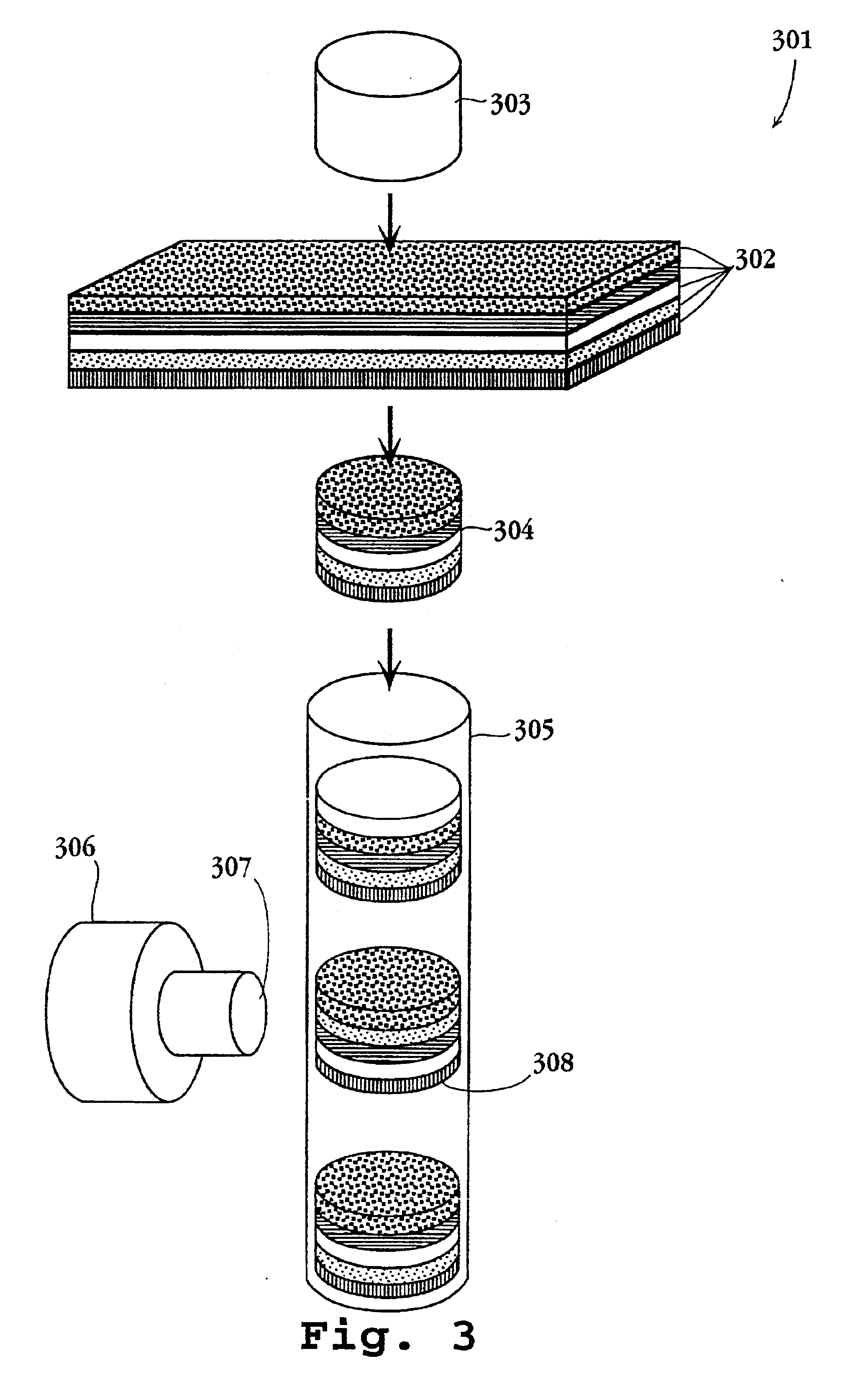Systems and methods of conducting multiplexed experiments
a multiplexing and experiment technology, applied in the field of multiplexing detection, analysis and quantification of analytes, can solve the problems of difficult methods, high cost of manufacture and analysis, and few laboratories can afford the technology for their diagnostic or research goals
- Summary
- Abstract
- Description
- Claims
- Application Information
AI Technical Summary
Benefits of technology
Problems solved by technology
Method used
Image
Examples
example 1
Taggants as Carriers
[0173]Two complementary 50-mer oligonucleotides, 1S (sense) and 1A (anti-sense), were covalently attached to two different classes of taggants taggants S and taggants A respectively. A CY3 labeled, single-strand DNA, p53s (sense strand) approximately 300 nucleotides in length and produced in a PCR reaction and used as the test DNA. This test DNA is complementary to oligonucleotide 1S and therefore expected to hybridize to it to a much greater extent than to strand 1A.
[0174]Following the hybridization reaction, a high amount of fluorescence was present on taggants S (containing the 1S, sense strand) and a negligible amount of fluorescence was observed on taggants A (containing the strand 1A, anti-sense strand). The difference in signal between taggants S and A represents specific hybridization. The experiments prove the following:[0175]DNA can be linked to taggant carriers.[0176]DNA can react as predicted when linked to taggant carriers. The hybridization reaction...
example 2
Molecular Beacons
[0178]Molecular beacons can be immobilized on the encoded carriers by following the method described by Fang. To accomplish this the carriers can be treated with avidine (0.1% solution in PBS) followed by a cross-linking treatment with a 1% glutaraldehyde solution for one hour. After washing with a 1M Tris / HCl buffer the coated carriers are mixed with the biotinylated beacons (at a concentration of 1×10−6 M) for 10 minutes. Lastly the beacons are washed with PBS and are used in the hybridization reaction.
PUM
| Property | Measurement | Unit |
|---|---|---|
| Color | aaaaa | aaaaa |
| Plasticity | aaaaa | aaaaa |
Abstract
Description
Claims
Application Information
 Login to View More
Login to View More - R&D
- Intellectual Property
- Life Sciences
- Materials
- Tech Scout
- Unparalleled Data Quality
- Higher Quality Content
- 60% Fewer Hallucinations
Browse by: Latest US Patents, China's latest patents, Technical Efficacy Thesaurus, Application Domain, Technology Topic, Popular Technical Reports.
© 2025 PatSnap. All rights reserved.Legal|Privacy policy|Modern Slavery Act Transparency Statement|Sitemap|About US| Contact US: help@patsnap.com



